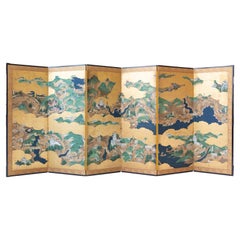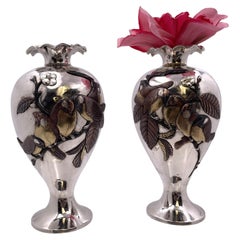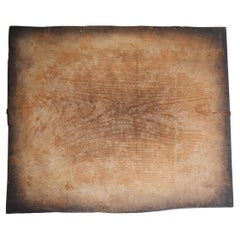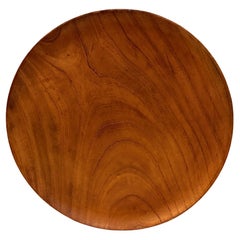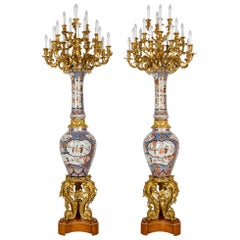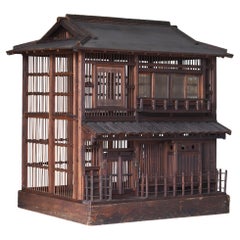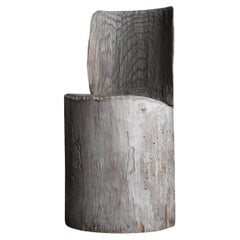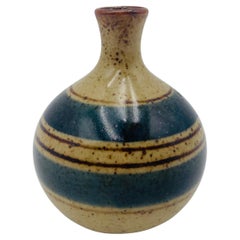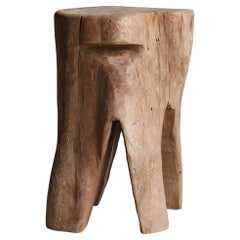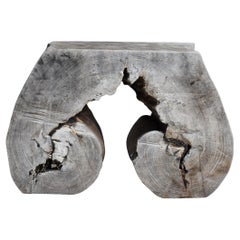Japanese Furniture
to
1,927
4,825
3,340
9,397
915
182
652
336
97
65
50
38
31
29
25
15
11
7
4
3
2
2
1
594
3,432
5,371
1,097
1,693
1,666
936
183
53
135
118
77
292
385
282
268
93
3,529
3,349
2,482
2,279
1,486
13,909
568,958
167,706
165,514
137,502
10,494
10,327
10,370
89
43
43
42
41
Place of Origin: Japanese
Japanese Antique Birdcage Inspired by a Traditional Machiya House 1920s-1940s
Located in Chōsei District Nagara, JP
This is an old Japanese birdcage, exquisitely crafted in the form of a traditional machiya townhouse. It is an exceptionally rare piece, believed to have been made in the early Showa...
Category
Early 20th Century Showa Japanese Furniture
Materials
Bamboo, Cedar
Japanese Old Primitive Side Chair 1940s-1960s / Wabisabi
By Axel Vervoordt
Located in Chōsei District Nagara, JP
This is an old Japanese primitive-style side chair, crafted sometime during the mid-Showa period (1940s–1960s).
It is a one-of-a-kind piece carved entirely from a single large block ...
Category
1940s Primitive Vintage Japanese Furniture
Materials
Cedar
Mid Century Weed Pot Japan 1960s
By Otagiri Company
Located in San Juan Capistrano, CA
Stunning little mid century weed pot. Made in Japan in the 1960s.
Category
1960s Mid-Century Modern Vintage Japanese Furniture
Materials
Ceramic
Japanese Antique Large Tansu 1860s-1900s / Sideboard Wabi Sabi
Located in Sammu-shi, Chiba
This is a historically significant Japanese tansu (chest) from the Meiji era (1860s–1900s), crafted from cedar wood.
Its minimalist and refined design embodies traditional Japanese ...
Category
Late 19th Century Meiji Antique Japanese Furniture
Materials
Cedar
Japanese Old Primitive Stool 1950s-1970s / Side Chair Wabisabi
Located in Chōsei District Nagara, JP
This is an old Japanese primitive-style stool, crafted in the mid-Shōwa period (1950s–1970s). Though simple in form, it carries a distinctive and compelling presence. Made from a sin...
Category
Late 20th Century Primitive Japanese Furniture
Materials
Cedar
Japanese Old Primitive Side Chair 1940s-1960s / Stool Display Stand Wabi Sabi
Located in Chōsei District Nagara, JP
This is an old Japanese primitive-style side chair, crafted sometime between the 1940s and 1960s in the Showa period.
Even after many decades, it still radiates a strong, commanding ...
Category
1940s Primitive Vintage Japanese Furniture
Materials
Wood
Antique Japanese Meiji Imari Porcelain Scalloped Edge Lions Birds Bowl 10"
Located in Dayton, OH
Antique Japanese imari porcelain fruit / serving bowl - round form with scalloped edge, decorated in blue, orange and green with Mandarin ducks nesting in a garden, pairs of blue gua...
Category
19th Century Antique Japanese Furniture
Materials
Porcelain
Group of Koi (Carp) screen ) by Nitten artist Tozaburo Ohno (大野藤三郎)
Located in Fukuoka, JP
Tozaburo Ohno (大野藤三郎)
A Japanese-style painter known for his refined depictions of koi carp and seasonal flowers. Born in 1917 in Osaka (though some sources cite Kyoto), he studied ...
Category
20th Century Showa Japanese Furniture
Materials
Wood, Paper
Wall-hanging object made of antique Japanese paper / like an abstract painting
Located in Sammu-shi, Chiba
This time we will be introducing some very rare item.
This is a tool called a "hoiro" (roaster) used in tea leaf production, believed to have been made in Japan between the Meiji and...
Category
Early 20th Century Meiji Japanese Furniture
Materials
Paper
Vintage Bamboo & Paper Wagasa Umbrella with Orizuru Print - Japan - Circa 1950's
Located in Chatham, ON
Vintage bamboo and oiled paper Wagasa umbrella or parasol - large size - hand made - featuring an Orizuru (origami folded crane) print against a red circle - overall printed textile ...
Category
Mid-20th Century Japonisme Japanese Furniture
Materials
Bamboo, Paper
Japanese Antique Primitive Side Chair 1900s-1940s / Display Stand Wabi Sabi
Located in Chōsei District Nagara, JP
This is an old Japanese primitive-style stool or stand, believed to have been crafted in the early Showa period (1900s–1940s). The material appears to be kiri (paulownia wood), known...
Category
Mid-20th Century Primitive Japanese Furniture
Materials
Wood
Large Antique Meiji Japanese Cloisonne Enamel Iris Vase Hayashi School
Located in Long Island City, NY
An exceptional Japanese cloisonné enamel vase from the golden age of the Meiji period, delicately worked in fine silver wire and attributed to the celebrated master Hayashi Kodenji. ...
Category
Late 19th Century Antique Japanese Furniture
Materials
Enamel
Japanese Antique Wabi-Sabi Low Table Edo period 1800s-1860s / Side Table
Located in Chōsei District Nagara, JP
This is an old Japanese low table, crafted during the Edo period (1800s–1860s). It is a rare piece of furniture that has survived through the centuries to the present day. Made of su...
Category
Mid-19th Century Edo Antique Japanese Furniture
Materials
Cedar
Expertly Restored - Japanese Tendo Mokko "Heron" Cognac Leather Lounge Chair
By Tendo Mokko
Located in Los Angeles, CA
________________________________________
Transforming a piece of Mid-Century Modern furniture is like bringing history back to life, and we take this journey with passion and precis...
Category
1960s Mid-Century Modern Vintage Japanese Furniture
Materials
Leather, Wood, Beech
Large Pair of Meiji Period Japanese Cloisonne Enamel Vases Attributed to Goto
Located in Long Island City, NY
A large pair of Meiji Period Japanese cloisonne enamel vases attributed to Goto Seizaburo, 19th century.
These vases were made during the Meiji period (1868-1912) in Japan and are ...
Category
20th Century Japanese Furniture
Materials
Enamel
Japanese Antique "BORO" 1800s-1860s / Rag Tapestry Patchwork Textile Wabisabi
Located in Chōsei District Nagara, JP
This is an old Japanese BORO, dating back to the late Edo period (1800s–1860s). It is an extremely valuable textile that has been carefully preserved and passed down to the present d...
Category
Mid-19th Century Edo Antique Japanese Furniture
Materials
Fabric
Japanese antiques wood table /wabi-sabi side table / primitive wood table / stan
Located in Sammu-shi, Chiba
This table is made from branches repurposed from some of Japan's most antique folk tools, combined with old zelkova planks. Its small size makes it suitable for use as a side table o...
Category
Mid-20th Century Primitive Japanese Furniture
Materials
Wood
The Man With a Golden Gun 1973 Japanese B2 Film Poster, Robert McGinnis
Located in Bath, Somerset
Fab first-year-of-release Japanese film poster for James Bond's 1964 film Goldfinger, arguably one of his finest outings. A rare and highly collectible item.
This original vintage m...
Category
20th Century Japanese Furniture
Materials
Paper
Japanese Antique Large Tansu 1860s-1900s / Storage Cabinet Sideboard Wabisabi
Located in Chōsei District Nagara, JP
This is a large antique Tansu chest from Japan, crafted during the Meiji period (1860s–1900s). Made with Japanese cedar and finished with great care, it has endured for over a centur...
Category
Early 20th Century Meiji Japanese Furniture
Materials
Cedar
Japanese Antique Large Tansu 1860s-1900s / Sideboard Cabinet Storage Wabi Sabi
Located in Chōsei District Nagara, JP
This is a large antique Tansu chest from Japan, crafted during the Meiji period (1860s–1900s). It is made of Japanese cedar, whose surface has gained depth and character over time, c...
Category
Early 20th Century Meiji Japanese Furniture
Materials
Cedar
Antique Japanese Katana Samurai Sword Ray Skin Handle Wood Scabbard 38"
Located in Dayton, OH
Antique Japanese katana / samurai sword. Same / white rayskin over wood on the tsuak (handle / hilt. Tsuba (guard) etched with flowers and dragons. Nakago (tang) signed. Black lacque...
Category
19th Century Antique Japanese Furniture
Materials
Metal
Japanese Asian Signed Four Panel Folding Byobu Screen of Mount MT Fuji Landscape
Located in Studio City, CA
A gorgeous four-panel Showa Period Japanese Byobu folding screen featuring a luminous Mount (Mt,) Fuji perched high above a beautiful natural landscape scene which depicts a small qu...
Category
20th Century Showa Japanese Furniture
Materials
Gold Leaf
(3) Mid 20th Century Cast Iron Figural Pigeons. Japan, Circa 1955
Located in Incline Village, NV
Being offered is a hard to find set of three cast iron ornamental garden pigeons; made in Japan, circa 1955. They are well cast, with great overall detail especially, to the feathers...
Category
1950s Mid-Century Modern Vintage Japanese Furniture
Materials
Iron
Mid Century "120A" Washi Paper Akari Ceiling Lamp Pendant by Isamu Noguchi 1960s
By Isamu Noguchi
Located in Stockholm, SE
A very rare and large round "120A" mid century paper ceiling lamp sculpture in washi paper and bamboo by Isamu Noguchi produced and branded with the iconic red "Sun on The Moon" logo...
Category
1960s Mid-Century Modern Vintage Japanese Furniture
Materials
Metal
Japanese Authentic Old Garden Tree Lantern With Excellent Details
Located in South Burlington, VT
Old Timbered Roof Tree Lantern, lucky bamboo design
An early hard to find Japanese natural "Tree" form lantern, "Koboku-Toro" with fine handcrafted details including a timbered roof...
Category
1950s Showa Vintage Japanese Furniture
Materials
Iron
Pair of Vintage Japanese Lefton Porcelain Cat Figurines – Mid-Century Modern
Located in Bochum, NRW
Pair of Vintage Porcelain Cat Figurines – Mid-Century Japanese Craftsmanship
Grace your space with this elegant pair of vintage porcelain cat fi...
Category
1960s Mid-Century Modern Vintage Japanese Furniture
Materials
Porcelain
$378 Sale Price / set
20% Off
Japanese antique small stone Buddha / 1850-1920 / Stone Buddha statue
Located in Sammu-shi, Chiba
This is a small stone Buddha statue created in Japan between the end of the Edo period and the Taisho period. Carved from a solid granite-like stone, it retains the image of the Budd...
Category
Late 19th Century Edo Antique Japanese Furniture
Materials
Stone
1960's Chesterfield Lighter in Original Box w Paperwork by Continental Merch. Co
By Continental Merchandise Co.
Located in Red Lion, PA
1960s Chesterfield Cigarette Advertising Lighter in Original Box with Paperwork — Continental Merchandise Co.
This rare 1960s Chesterfield advertising lighter was produced by the Co...
Category
1960s Mid-Century Modern Vintage Japanese Furniture
Materials
Metal, Chrome
Japanese Antique Wabisabi Tin Toy Truck 1920s-1940s / Figurine Object
Located in Chōsei District Nagara, JP
This is an old tin toy truck made in Japan, believed to date back to the early Showa period (1920s–1940s). It is a rare artifact that speaks to the honest and humble craftsmanship of...
Category
Mid-20th Century Showa Japanese Furniture
Materials
Tin
Antique Japanese Hibachi in Paulownia Wood with Gold Makie and Raden Floral Des
Located in Fukuoka, JP
This is an exceptional and generously sized antique Japanese hibachi (charcoal brazier) from the Taisho era, a period renowned for its refined blend of traditional craftsmanship and ...
Category
Early 20th Century Taisho Japanese Furniture
Materials
Copper
Post Modern Display Mannequin
Located in Riverdale, NY
Post Modern Display Mannequin from a Japanese store formerly located on Madison Ave, NY. Articulated fiberglass mannequin body has screws at joints to change positions. Face is separ...
Category
1980s Post-Modern Vintage Japanese Furniture
Materials
Metal
$395 / item
Japanese Antique Stone Carving Penis 1800s-1860s / Sculpture Wabi Sabi Mingei
Located in Chōsei District Nagara, JP
This is an old Japanese stone carving of a phallus, believed to have been made in the late Edo period (1800s–1860s). It is a rare and valuable a...
Category
Late 19th Century Edo Antique Japanese Furniture
Materials
Stone
Large Antique Meiji Japanese Cloisonne Enamel Dragon Vase Signed
Located in Long Island City, NY
A fine quality Japanese vase from the time of Emperor Meiji, 1868 to 1912. Of a baluster form with slightly lobed shoulders, the body is adorned with a finely detailed shaded cloison...
Category
Late 19th Century Meiji Antique Japanese Furniture
Materials
Metal
$4,875 Sale Price
35% Off
Old Japanese wooden display stand and stool / 20th century/Wabi-sabi object
Located in Sammu-shi, Chiba
This wooden display stand/stool was made in Japan around the 20th century. It's believed to be made from solid, solid zelkova (keyaki) wood, exuding a strong grain and sturdy texture...
Category
20th Century Showa Japanese Furniture
Materials
Other
Pair Of Meiji Japanese Cloisonne Enamel Vases Kyoto School
Located in Long Island City, NY
A pair of Japanese cloisonne enameled brass vases. They feature a narrow neck, rounded body, and are decorated with an intricate pattern of floral designs in various colors, and gilt...
Category
Late 19th Century Antique Japanese Furniture
Materials
Brass, Enamel
$1,300 Sale Price / set
35% Off
Pink Panther Collection Royal Orleans Pottery Pink Panther Mounted Box
By United Artists
Located in Bishop's Stortford, Hertfordshire
A delightful, Japanese licensed Pink Panther Collection lidded box distributed by Royal Orleans and dated 1981. The ceramic box is of large oval form with a fitted slightly domed cov...
Category
1980s Modern Vintage Japanese Furniture
Materials
Ceramic
Japanese Unusual Stone Spirit Lantern 35 Inches , portable
Located in South Burlington, VT
From our recent Japanese acquisitions
Japan, an unusual and handsome red stone spirit lantern in a mountain style and measuring: 35 inches high and 24 inches wide at bottom, four p...
Category
Mid-20th Century Showa Japanese Furniture
Materials
Stone, Sandstone
Antique Japanese Cloisonne Enamel Early Meiji Namikawa School Vase
Located in Long Island City, NY
An antique Japanese early Meiji period cloisonne vase, attributed to the renowned artist Namikawa Yasuyuki. Adorned with intricate floral motifs, delicate butterflies, and exquisite ...
Category
Late 19th Century Meiji Antique Japanese Furniture
Materials
Enamel
$585 Sale Price
35% Off
Meiji Japanese Cloisonne Turquoise Enamel Japanese Garden Vase Silver Wire
Located in Long Island City, NY
A high quality Japanese, late Meiji era, silver wire and enamel vase. The amphora shaped vase is adorned with polychrome enamel images of birds, trees, blossoming flowers, and screen...
Category
Late 19th Century Meiji Antique Japanese Furniture
Materials
Enamel, Silver
$2,600 Sale Price
35% Off
Modernist Japanese Iron Ikebana Planter, Japan, c.1955
By Isamu Noguchi
Located in San Juan Capistrano, CA
Mid Century Modern Ikebana Tripod Planter, Japan, c.1955.
Category
20th Century Mid-Century Modern Japanese Furniture
Materials
Iron
Japanese Antique Stone Sun And Moon Pathway Lantern Beautiful Details 30 Inches
Located in South Burlington, VT
Wouldn't this antique garden stone lantern look perfect for your garden entry or pathway, pool, patio, or deck ?
Just acquired, our Japan "Arts & Crafts" antique stone pathway lanter...
Category
Early 20th Century Taisho Japanese Furniture
Materials
Stone
Tall 12" Japanese Kokeshi Doll
Located in Fairfield, CA
A tall vintage Japanese kokeshi doll. Made of wood with a lovely hand painted floral design in red and green.
Category
Late 20th Century Japanese Furniture
Materials
Wood
Vintage Japanese Cloisonne Ginger Jar
Located in Chicago, IL
A riot of color contained in a single form: this mid-20th century Japanese cloisonné ginger jar dazzles with a large-scale chrysanthemum and peony pattern, each petal and leaf outlin...
Category
Mid-20th Century Japonisme Japanese Furniture
Materials
Brass, Enamel
21 Pc Japanese Satsuma Moriage Dragonware Lithopane Geisha Coffee Tea Set
Located in Dayton, OH
Circa early to mid-20th century Japanese porcelain tea set - a mixed lot of various makes in the same style. Three-dimensional blue and whit...
Category
Mid-20th Century Meiji Japanese Furniture
Materials
Porcelain
Japanese handmade Men's Long Silk Kimono #1 from 1955
Located in Norton, MA
BEAUTIFUL JAPANESE SILK KMIONO, in the color of Lavender, and still in new condition from the 1955 inventory, never used.
Category
1950s Vintage Japanese Furniture
Materials
Silk
Pair of 19th Century Japanese Meiji Period Imari Blue Floral Scalloped Chargers
By Imari Porcelain
Located in Pearland, TX
A gorgeous pair of 19th-Century Japanese Meiji Period Imari dark blue porcelain chargers. These fine large plates have lovely scalloped edges and hand painted floral decorations in t...
Category
19th Century Antique Japanese Furniture
Materials
Porcelain
Antique Japanese Satsuma Vase, Hand-Painted Warrior Scene, Meiji-Era Masterpiece
By Satsuma
Located in Bochum, NRW
Antique Japanese Satsuma Vase – Hand-Painted Warrior Scene, Meiji-Era Masterpiece.
Japanese Satsuma ceramic vase with polychrome decorations of Japanese men and soldiers in armor. Go...
Category
1930s Meiji Vintage Japanese Furniture
Materials
Porcelain
$719 Sale Price
20% Off
Japan Tall Antique Hand Crafted Inari Fox Kitsune With Glass Eyes Inari Shrine
Located in South Burlington, VT
Japanese antique shinto shrine ceramic Inari fox guardian and Shinto Kami (god).
Rare glass eyes and remnant red (mouth) and white paint on its base still present and it holds the ...
Category
Early 20th Century Taisho Japanese Furniture
Materials
Pottery, Glass
Japanese Antique Earthen Wall Base / Wall Decoration / 1868-1912s Wabi-sabi
Located in Iwate-gun Shizukuishi-cho, Iwate Prefecture
This wall decoration is the base of the earthen wall of an old Japanese house.
In Japan, it's called "komai."
It was originally part of the earthen wall of a house built around the ...
Category
Late 19th Century Meiji Antique Japanese Furniture
Materials
Straw, Rope, Wood
Japanese Antique Large Tansu 1860s-1900s / Storage Cabinet Sideboard Wabisabi
Located in Sammu-shi, Chiba
Japanese Antique Large Tansu crafted from beautifully grained keyaki (zelkova) wood, dating from the Meiji to Taishō period (late 19th to early 20th century).
The cabinet’s serene a...
Category
Late 19th Century Meiji Antique Japanese Furniture
Materials
Wood
Japanese Antique Stone Mortar 1860s-1900s / Stone Bowl Object Wabi Sabi
By Axel Vervoordt
Located in Chōsei District Nagara, JP
This is an old Japanese stone “yagen” (medicine grinder), believed to have been used during the Meiji period (1860s–1900s).
Though simple in form, it carries with it the silent prese...
Category
Early 20th Century Primitive Japanese Furniture
Materials
Stone
Japanese Asian Signed 8-Panel Folding Byobu Showa Cherry Blossom Tree Screen
Located in Studio City, CA
A gorgeous eight-panel (the screen folds in half instead of fourths due to hanging brackets on the back) Showa Period Japanese Byobu folding screen depicting a nature scene with a be...
Category
20th Century Showa Japanese Furniture
Materials
Gold Leaf
Japan Big Old Stone Garden Frog 15"
Located in South Burlington, VT
A delightful opportunity to acquire a Larger scale Japanese hand-carved stone frog sculpture fresh from an old Nagoya Japan garden dating in the 20th century. Portable size offers g...
Category
20th Century Showa Japanese Furniture
Materials
Granite
Japanese Antique Rag "BORO" 1800s-1860s / Abstract Art Wabi Sabi
Located in Sammu-shi, Chiba
This is an exceptional example of a Japanese *BORO* textile, dating from the late Edo period (1800s–1860s). Carefully preserved over generations, it embodies both the resourcefulness...
Category
Mid-19th Century Edo Antique Japanese Furniture
Materials
Fabric
Japanese Meiji Cloisonné Enamel Vase with Cherry Blossoms, Ota Tamashiro
Located in Queens, NY
A Japanese Meiji Period Silver-Wire Cloisonné Enamel Vase with Cherry Blossoms and Narcissus, Attributed to Ota Tamashiro
An elegant Japanese cloisonné enamel vase from the Meiji pe...
Category
19th Century Meiji Antique Japanese Furniture
Materials
Copper, Enamel
Antique Japanese Taisho Period Hinamatsuri Doll
Located in Long Island City, NY
An antique traditional Japanese Hinamatsuri Ningyo doll for traditional Girls Day celebration, most likely from the Taisho period, 1912 to 1926. The doll depicts a Japanese emperor w...
Category
Early 20th Century Meiji Japanese Furniture
Materials
Textile, Wood
$195 Sale Price
35% Off
Japanese antique pottery with very beautiful colors/ [shigaraki] Jar/1500-1600
Located in Sammu-shi, Chiba
It is "Shigaraki ware".
Shigaraki is a historical kiln located in Shiga Prefecture, Japan. (Shigaraki Kiln is marked with a red circle on the map.)
It is said to have originated in t...
Category
16th Century Other Antique Japanese Furniture
Materials
Pottery
Japanese Antique BK Tansu 1860s-1900s ① / Cabinet Sideboard Wabi Sabi
Located in Sammu-shi, Chiba
This chest of drawers is one of a set of three used in the same old Japanese house.
Judging from its current condition, it appears to be quite old. It is in all original condition.
...
Category
Early 20th Century Edo Japanese Furniture
Materials
Cedar
Japanese Antique Sliding Door with Galvanized Steel 1860s-1900s / Wabi Sabi
Located in Chōsei District Nagara, JP
This is an old Japanese sliding door with galvanized metal cladding, crafted during the Meiji period (1860s–1900s).
A rare surviving example, this piece showcases the ingenuity and a...
Category
Early 20th Century Meiji Japanese Furniture
Materials
Steel
Japanese Antique Artillery Shell 1900s-1920s / Iron Ball Object Wabisabi
Located in Chōsei District Nagara, JP
This is an old Japanese artillery shell.
From its appearance, it is assumed that it is an iron shell for artillery.
Considering the size, shape, and rusty condition of this iron ball...
Category
1910s Showa Vintage Japanese Furniture
Materials
Iron
Recently Viewed
View AllMore Ways To Browse
Baccarat Dish
Baker Campaign Chest
Balinese Wood Carving
Ball And Claw Chest
Bambi Deer
Bamboo Chairs Aluminum
Barbini Aquarium
Bauer Ceramic
Beaded Horse
Bernhardt Glass
Bevan Funnell Campaign
Bird Carved Cabinet
Birdcage Tilt Top Table
Black Chinoiserie China Cabinet
Black Forest Wood Frame
Black Gold Jar
Blanc De Chine Guanyin
Blessed Virgin Mary
